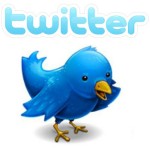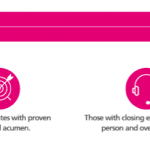
Everyone is familiar with the frustration of imparting important information only to see that information going in one ear and out the other. Journalist Sydney J. Harris once wrote, “The two words ‘information’ and ‘communication’ are often used interchangeably, but they signify quite different things. Information is giving out; communication is getting through.”
At Strayboots we often get to witness the interplay between information and communication on our team building scavenger hunts. We get to see what they have in common as well as what sets these two types of interactions apart. The lesson is as obvious as the team that comes in first on the merit of points earned in the fastest time: that information alone is meaningless when members of a team can’t communicate and work together efficiently to solve a problem.
Improving communication – and the understanding that often comes with it – is commonly known to be one of the core components of effective team building. Still, there’s much disagreement on the value of co-workers socializing whether onsite or off.
MIT’s Human Dynamics Laboratory’s research, “collected on the importance of socializing not only build[s] on conventional wisdom but sometimes upend[s] it.” Their data shows that socializing has a far greater impact than one would think, often having as much as a 50% impact on positive changes in communication.
One of the most fascinating aspects of this particular study is how the researchers gathered the data. They utilized electronic badges which gathered information on the subjects’ body language, tone of voice, who they spoke with and how often; all of this is done without revealing the actual content of these conversations. The study’s authors call these data points sociometrics, and have used them to predict which team would have a successful sales pitch, the financial results of different investment teams, as well as which team members had a “productive” or “creative” day. What they have been able to clearly recognize is that there are three key elements to communication that affect team performance:
- Energy: Energy levels were measured by how many exchanges a team was having, as well as by how they were interacting eg: email. This was done with a simple exchange being defined as a comment with a single-word or nonverbal response.
- Engagement: Engagement was measured as the function of theenergy (exchanges) between the various members of the team. For example, in a three person team with high engagement, employee A would have a high level of energy with employee B and C, as well as employees B and C having a high level of energy with each other.
- Exploration: Exploration was measured by how often team members would leave their team to communicate with other teams they could interact with.
Call-centers are uniquely practical for studying and testing team building methods, in large part due to the ease in which their success can be measured: customer satisfaction, number of issues resolved, and average handling time. Some of the teams in the aforementioned study from call-centers showed an increased level of productivity when half of the interactions were one-on-one conversations between team members.
This flies in the face of conventional wisdom in a high-demand workplace like a call-center, especially considering one would assume they would usually have their employees focusing on having interactions with customers. The increased energy amongst the employees helped make workplace communication more efficient, and also helped improve the engagement amongst the team members.
It’s common in many teams for cliques to form, but this can also be a hindrance to the overall success of the team. The researchers found that when they were observing teams making investment decisions the teams that were only partially engaged (only some team members interacting regularly) made investments that were less profitable than teams that were fully engaged with each other.
Interestingly, their data also showed that a low energy team was actually better than a high energy team so long as engagement was high.
By compiling all the data they had gathered, the MIT researchers were able to find a few defining characteristics of effective teams, which we also often see among teams on our scavenger hunts. Some of these characteristics include equal interactions among teams members, keeping conversations short and simple, and maintaining a high level of energy when during face to face interactions. It’s also important for team members interact to directly with each other, and not just through or with their team leader.
While these findings may seem like common sense, they do offer verifiable data on the value of team building. And proof that genuine and effective communications certainly trumps information alone when it comes to its potential impact on productivity and innovation.
About Strayboots
Ido Rabiner is co-founder and CEO of Strayboots, a global provider of corporate team building events, workplace activities, and organized company outings. Strayboots helps customers increase employee engagement through customized mobile scavenger hunts designed to foster connections, improve performance and build trust. Strayboots hunts are used by more than 650 organizations including Fortune 100 companies, cities and businesses worldwide. To learn more please visit https://www.strayboots.com/events/.








